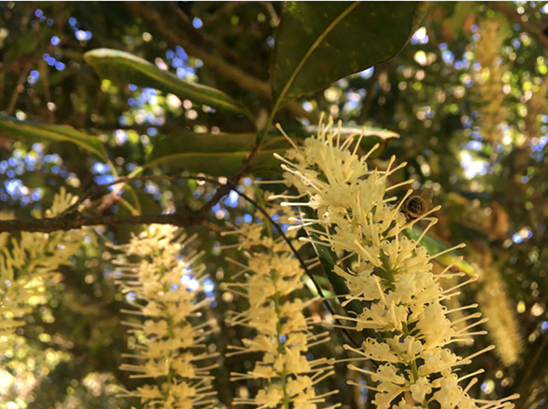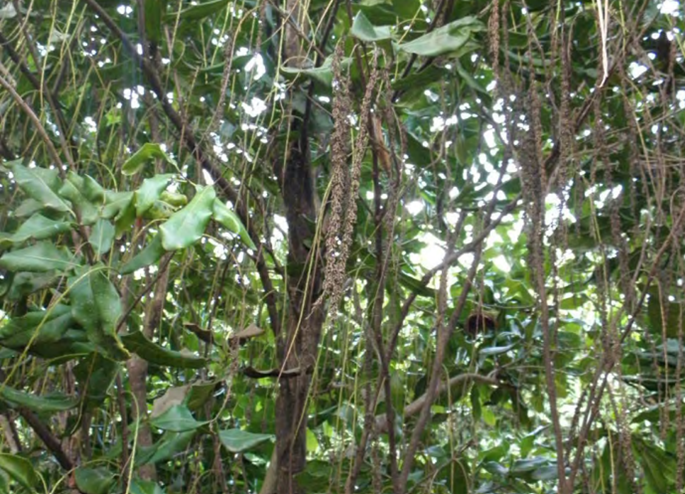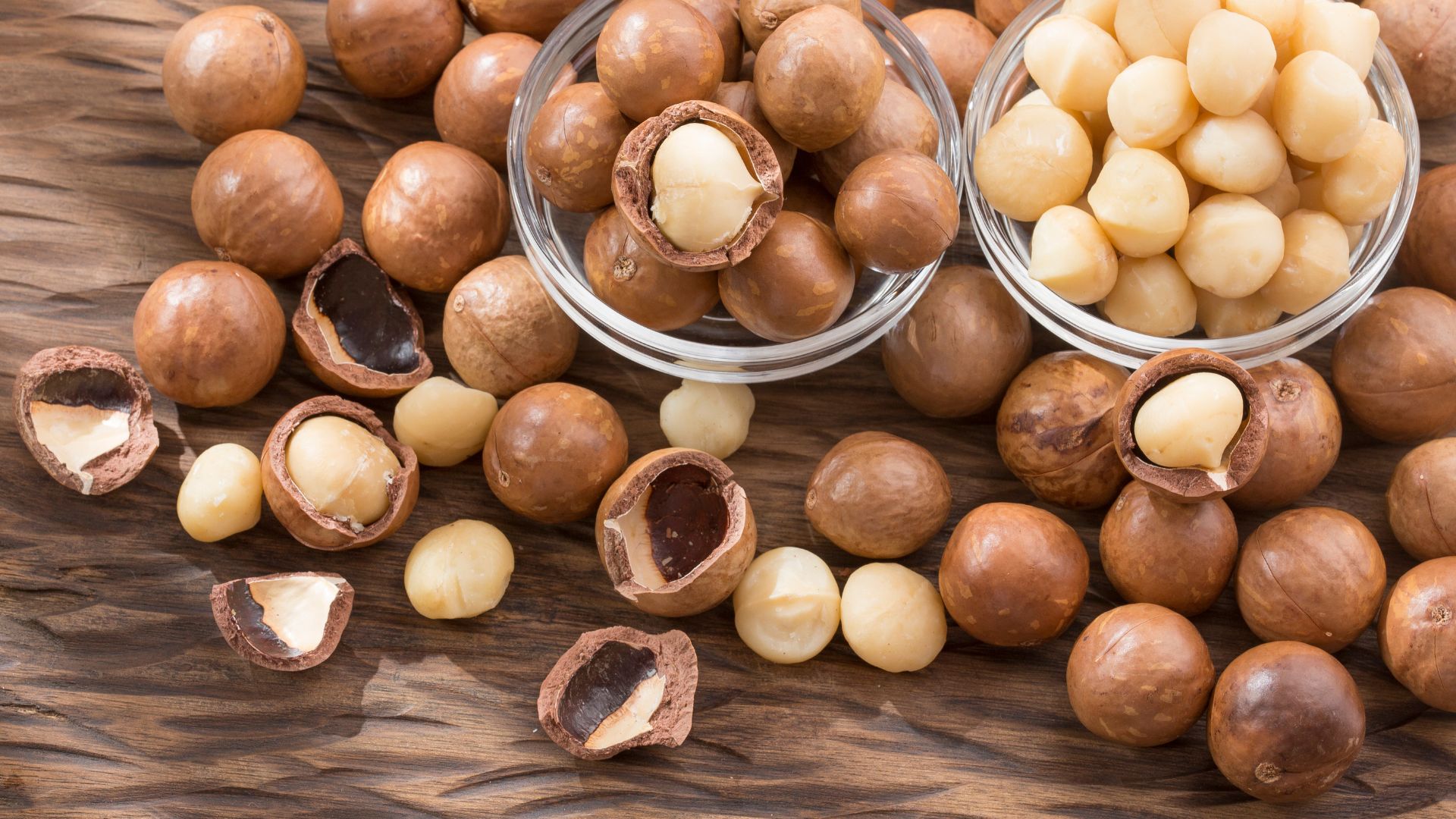Macadamia nuts are among the most valuable and luxurious tree nuts in the world. Native to Australia, macadamia trees have become a global agricultural success story, thriving in diverse climates and contributing significantly to the economies of several countries. This article provides an overview of macadamia cultivation, from its history and soil needs to phenology and orchard management. It is designed for growers, researchers, and agricultural professionals exploring how to optimize macadamia production, especially in Mediterranean-like climates — and yes, even in Lebanon.
A Brief History of the Macadamia Tree
The macadamia tree originates from the subtropical rainforests of northeastern Australia, particularly Queensland and New South Wales. It was first scientifically described in the 1850s by Ferdinand von Mueller, who named it after his friend Dr. John Macadam, a chemist and politician.
Although Indigenous Australians had long valued the tree, it wasn’t until the late 19th century that macadamia seeds traveled to Hawaii, where commercial cultivation began. Hawaii led global production for decades, until countries like South Africa, Kenya, Australia, and Brazil rose to prominence.
Of the seven native species in Australia, only two — Macadamia integrifolia (smooth shell) and M. tetraphylla (rough shell, less preferred for roasting) — are cultivated for nuts. The trees are slow-growing evergreens that reach up to 12-15 meters in 10-15 years. Because most cultivars are partly or fully self-incompatible, bees play a critical role in pollination. Popular cultivars include ‘Beaumont’, ‘A4’, and ‘816’.
Soil Requirements for Macadamia Trees
Macadamias demand well-drained soils to prevent root diseases and erosion, which otherwise harm feeder roots and productivity. Optimal soil pH is slightly acidic, between 5.0 and 6.5, ensuring healthy root and canopy development.
Phenology and Orchard Management
In managing macadamias, phenology — rather than the strict calendar — guides interventions. Typically:
- November: Flower initiation starts after around 120 hours under 18°C.
- Feb–Mar: Peak flowering (late winter to early spring).
- Mar–Apr: Nut set.
- May–Jul: Nut development, oil accumulation. Quality depends heavily on this oil build-up.
- Sep–Nov: Mature nut drop.
Cultivars with extended flowering periods allow better cross-pollination, which is essential for yield. To avoid unproductive canopies and erosion, pruning and correct spacing (tailored to tree shape and vigor) are fundamental.
Watering and Spacing
During establishment, trees may need 40 liters per tree weekly, scaling to 150 liters by the fourth year in dry spells. Once mature, soil moisture monitoring tools like tensiometers help optimize irrigation.
Spacing varies by cultivar architecture:
- Wide (9×5m or <222 trees/ha) for spreading types.
- Medium (8×4m or ~250–312 trees/ha) for upright, open canopies.
- Close (7×4m or >357 trees/ha) for smaller, upright types.
Flowering & Cross-Pollination
Planting at least three cultivars that flower simultaneously increases successful cross-pollination and nut retention. Cultivars with shorter windows risk losses if rain or pests coincide with flowering.

Tree Form
Macadamia trees naturally develop different shapes — some spread wide, others grow upright, and many form rounded canopies with dense foliage. Keeping this canopy open through careful, regular pruning is essential. It allows sunlight to penetrate, helps ground cover stay healthy (preventing erosion), and ensures fruits develop throughout the tree, not just on the outer edges. It also makes it easier for sprays to reach pests when needed.
Flowering and Cross-Pollination
Macadamia trees require cross-pollination between compatible cultivars for optimal nut production. Trees produce more mature nuts when pollen comes from a different cultivar rather than self-pollinating. For this reason, it is recommended to plant at least three cultivars with overlapping flowering periods.
Cultivars with longer flowering windows offer more opportunities for successful pollination and reduce risks from weather damage during bloom. Conversely, late-flowering cultivars can face increased pest pressure as insect populations rise later in the season. By planting a diverse mix of cultivars with staggered flowering times, growers can increase orchard resilience and maximize yields.


So, Can Macadamia Be Lebanon’s Next Best Crop?
Yes, macadamia can grow in Lebanon — and might just be your next big opportunity.
While macadamia trees flourish in subtropical conditions, Lebanon’s coastal regions offer surprisingly suitable microclimates. With average temperatures ranging from 12-13°C in cooler months up to 28°C, these areas fit well within the macadamia comfort zone. Even during hotter summers, flowering and fruit set typically finish early, so high temperatures pose minimal risk.
However, growers here should pay close attention to:
- Providing light shading, especially during early establishment, to mimic understory rainforest conditions.
- Providing soil with good drainage, for healthy development away from overwatering
- Monitoring soil pH, ensuring it stays between 5.0 and 6.5 for optimal nutrient uptake.
- Choosing coastal or slightly elevated sites, which naturally moderate temperature swings and avoid frost.
It’s worth noting that macadamia is still in its early stages in Lebanon, with only a couple of orchards currently established. The insights shared here are based on global best practices and early local observations, and more in-depth field experience will continue shaping what works best under Lebanese conditions. That’s exactly where we come in — to guide, support, and explore these opportunities with you.
In short: it’s not just a dream — with the right planning, macadamia could become Lebanon’s next agricultural success story! Does this sound like a project you’d like to embark on? Get in touch with us and let’s start your macadamia journey!

